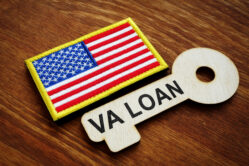Home improvement is an essential aspect of homeownership, allowing individuals to personalize and enhance their living spaces according to their needs and preferences. VA renovation loans provide a valuable financing option for Veterans looking to make significant changes to their homes. In this comprehensive guide, we will explore the different types of VA home improvement loans available and help Veterans find the right loan for their renovation goals.
VA Home Improvement Loan Types
Veterans have a variety of VA home improvement loan options available to them. These options include VA renovation loans, VA supplemental loans, and VA energy efficient mortgages. Each loan serves a unique purpose, so it’s important to understand their differences in order to make an informed decision.
Refer to the table below for guidance on what type of loan is best for your needs.
VA Renovation Loans |
VA Supplemental Loans |
VA Energy Efficient Mortgages |
|
| Purpose | To finance both the purchase/refinancing and the renovations of a home | To make improvements to an existing property | To make energy-efficient improvements |
| Eligibility | Veterans, active-duty service members, and some surviving spouses | Veterans, active-duty service members, and some surviving spouses who already have a VA home loan | Veterans, active-duty service members, and some surviving spouses |
| Loan Amount | Based on the appraised value of the property, including renovation costs | The lesser of the appraised value of the property or the cost of improvements | The lesser of the appraised value of the property or the cost of energy-efficient improvements |
| Types of Improvements Allowed | Any improvements that are permanently affixed to the property and increase its value | Necessary improvements to make the property habitable, safe, and functional | Energy-efficient improvements, such as solar heating/cooling systems, insulation, and weather-stripping |
| Additional Requirements | Contractors must be VA-approved or meet VA standards | Borrowers must provide written estimates and plans for the improvements | Borrowers must obtain an energy efficiency rating and a cost-effective analysis |
| Loan Terms | Available as a purchase or refinance loan | Available as a supplement to an existing VA loan | Available as a purchase or refinance loan |
| Example Scenario | A Veteran purchases a fixer-upper and wants to finance both the purchase and renovation costs | A Veteran wants to add an extra bathroom to their existing home | A Veteran wants to install solar panels to make their home more energy-efficient |
What is a VA Renovation Loan?
A VA renovation loan, sometimes called a VA rehab loan, allows Veterans to finance both the purchase or refinance of a home and the cost of desired renovations.
This loan type is ideal for Veterans who want to buy a fixer-upper or upgrade their existing property to better suit their needs. By combining the purchase or refinance loan with the renovation funds, Veterans can avoid the hassle of seeking separate financing for their home improvements.
VA Renovation Loan Eligibility Requirements
To be eligible for a VA renovation loan, Veterans must meet the following criteria:
- Obtain a valid Certificate of Eligibility (COE).
- Intend to use the property as a primary residence.
- Pass a VA appraisal and meet all minimum property requirements (MPR).
- Renovations must improve the liveability, use, and safety of the home.
- All construction must be completed within 120 days of your closing date.
It’s crucial to work with a VA-approved lender who can guide you through the application process and ensure you meet all the necessary eligibility requirements.
VA Renovation Loan Limits and Terms
VA renovation loans don’t have maximum loan limits set by the VA as long as the eligible borrower still has full entitlement. Borrowers can expect a loan amount of the lesser value between the home appraisal and cost of the home and improvements.
For example, if a Veteran’s home is appraised at a value of $250,000, but the purchase of the home costs $150,000 and the planned improvements cost $50,000, the borrower should expect a loan value of $200,000.
If a borrower does not have their full entitlement, meaning they have taken out a VA loan before and have not paid it off and sold the property, then loan limits are generally imposed based on the county where the property is located. Find your loan limit in the 2024 VA loan limit guide.
The loan terms, including interest rates and repayment periods, vary among lenders, so it’s best to compare multiple lenders and choose the option that best suits your financial situation.
VA Supplemental Loans
VA supplemental loans are for Veterans who already have a VA loan and are looking to make improvements to their VA home loan property. With a VA supplemental loan, Veterans can make their property more habitable, safe, and functional without having to face hefty renovation costs all at once.
For example, a Veteran might use a VA supplemental loan if they are seeking to repair their roof or windows. However, a VA supplemental loan cannot be used for luxuries such as adding a pool or a barbeque pit.
VA Supplemental Loan Eligibility Requirements
To qualify for a VA supplemental loan, Veterans must meet the following criteria:
- Borrower must have an existing VA loan.
- No more than 30% of the loan can be used for non-fixtures or quasi-fixtures, such as refrigeration, cooking, washing, or heating equipment.
- The Veteran must have enough entitlement remaining for the loan amount.
- Obtain a valid Certificate of Eligibility (COE).
- Intend to use the property as a primary residence.
- Pass a VA appraisal and meet all minimum property requirements (MPR).
- Renovations must improve the liveability, use, and safety of the home.
- All construction must be completed within 120 days of your closing date.
- If the cost of repairs and improvements cost more than $3,500:
- A Notice of Value (NOV) and compliance inspections are required.
- If the cost of repairs and improvements cost less than or equal to $3,500:
- A statement of reasonable value must be submitted and signed by a VA-designated appraiser.
Veterans should discuss their specific renovation needs with a VA-approved lender to determine if a supplemental loan is the right option for them.
VA Supplemental Loan Amount
VA supplemental loan amounts are dependent on a Veteran’s entitlement and loan limits, which are determined by county. Veterans seeking a VA supplemental loan likely do not have full entitlement because they should already have an existing VA loan. Find your remaining VA entitlement or discuss with your VA lender to better understand your VA supplemental loan limit.
VA Energy Efficient Mortgages
VA Energy Efficient Mortgages (EEMs) are for Veterans looking to make energy-efficient improvements to their homes. These loans are designed to help Veterans finance energy-efficient upgrades, such as solar panels, insulation, or weatherproofing. By investing in energy efficiency, Veterans can reduce their utility costs and contribute to a more sustainable environment.
VA EEMs have 3 cost tiers:
Improvements up to $3,000: This tier is the easiest to get approved for. To qualify, you will generally need to provide a contractor bid or quote that itemizes the costs of the energy-efficient improvements. Additionally, you’ll need to provide manufacturer information for each product or component involved in the improvements. The increase in loan payments will typically be offset by the decrease in utility costs.
Improvements $3,001 – $6,000: In addition to the documents required for the first tier, you’ll also need to obtain an energy audit that shows a year’s worth of utility cost averages for your home. These documents will be reviewed to assess whether the proposed energy-efficient improvements will have a significant impact on reducing the utilities to a cost-effective level. The lender also must ensure that the increase in monthly mortgage payments isn’t greater than the reduction in utility costs.
Improvements greater than $6,000: This tier is more challenging to obtain. Approval for this tier requires review and approval from both the lender and the VA. It’s important to note that financing the cost of acceptable energy efficiency improvements cannot be used to meet the minimum loan amount necessary for VA loans utilizing second-tier entitlement. In this tier, the lender will exercise discretion and consider whether the increase in monthly mortgage payments outweighs the likely reduction in monthly utility costs. They will also assess the applicant’s income to ensure it is sufficient to cover the higher loan payment.
It’s important to remember that the VA Energy Efficient Mortgage program allows veterans and service members to include the cost of energy-efficient improvements in their VA loan. The program aims to promote energy efficiency and reduce utility costs for homeowners.
VA Energy Efficient Mortgage Eligibility Requirements
To be eligible for a VA Energy Efficient Mortgage, Veterans must meet the same eligibility requirements as for other VA loans. Additionally, Veterans must obtain a home energy assessment to determine the potential energy savings of the planned improvements. It’s important to note that not all home improvements count for a VA EEM, so it’s advisable to consult the Department of Veterans Affairs or a VA-approved lender to ensure your desired improvements qualify.
Only certain improvements are eligible for an EEM loan. VA-approved improvements include but are not limited to:
- Solar panels
- Solar heating and cooling systems
- Caulking and weather-stripping
- Furnace efficiency modifications
- Clock thermostats
- New insulation
- storm windows or doors
- heat pumps
- vapor barriers
Ineligible improvements include but are not limited to:
- A/C units
- New roofing or shingles
- Cosmetic upgrades
- Kitchen or bathroom remodeling
In conclusion, VA renovation loans, VA supplemental loans, and VA energy efficient mortgages offer valuable financing options for Veterans looking to make home improvements. By understanding the eligibility requirements, loan limits, and terms associated with each loan type, Veterans can make informed decisions and choose the right loan to achieve their renovation goals. Working with a VA-approved lender will ensure a smooth loan application process and provide guidance throughout the renovation journey.



About the comments on this site:
These responses are not provided or commissioned by the bank advertiser. Responses have not been reviewed, approved or otherwise endorsed by the bank advertiser. It is not the bank advertiser’s responsibility to ensure all posts and/or questions are answered.